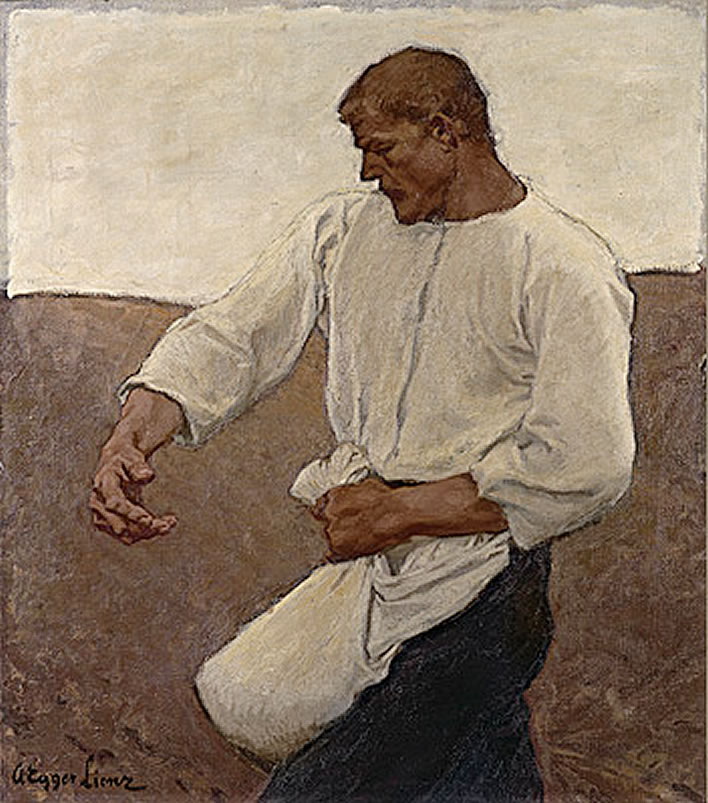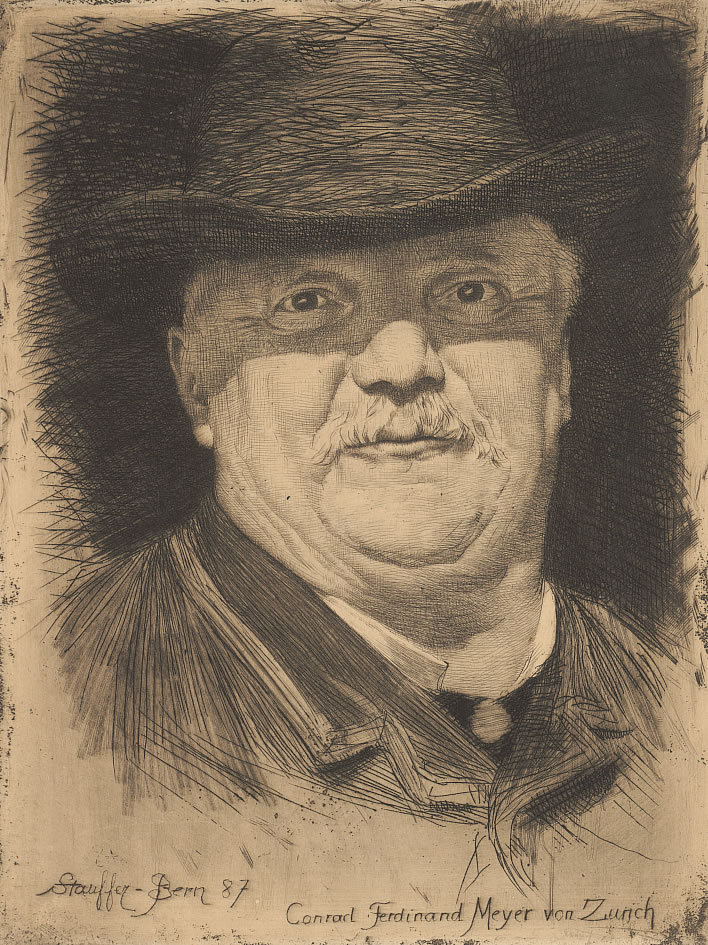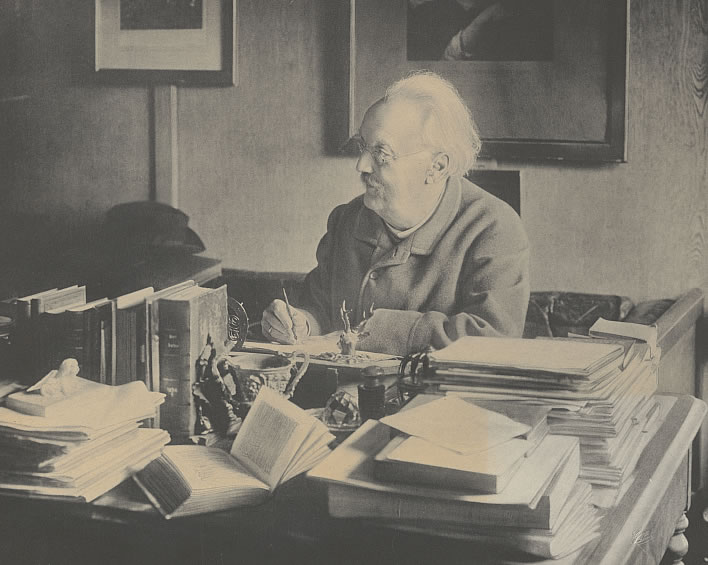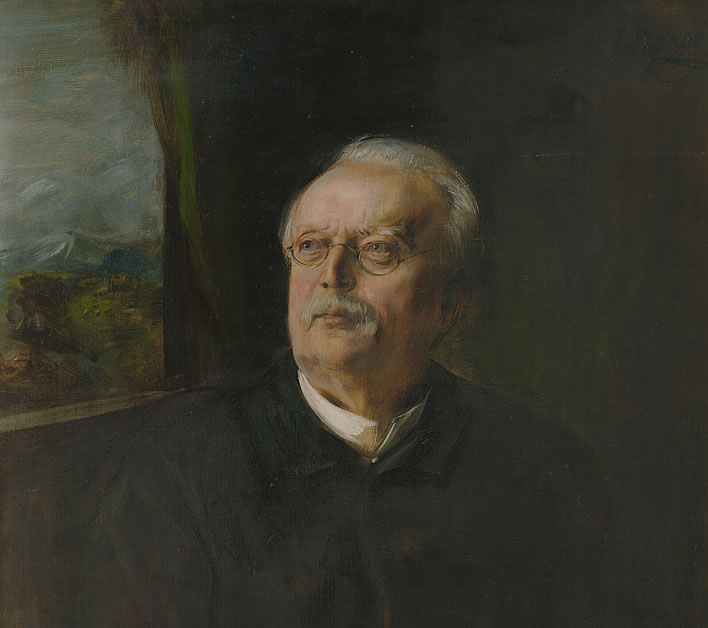Quote and image of the month 03.2020
Posted on UTC 2020-03-14 14:02
Albin Egger-Lienz, Der Sämann (1908)

Albin Egger-Lienz, Der Sämann, 'The Sower', 1908. Image: Leopold Museum, Wien.
We make no apology for using paintings by the Tyrolean artist Albin Egger-Lienz (1868-1926) for two 'Images of the Month' in a row. Today's painting is a detail for a larger conception, Sämann und Teufel, 'Sower and Devil', variants of which appeared in the 1920s.
This detail lacks the metaphorical depths of the later full images, but makes up for that in the wonderful detailing of the figure of the sower. Unfortunately, the Leopold Museum in Vienna, which is where this painting hangs, is one of those institutions which prefers to reserve its treasures for the gaze of the paying public. The image shown here is the best we can do.
Conrad Ferdinand Meyer, Säerspruch (pre-1865)
Sower's rhyme
Gauge the stride! Gauge the cast!
The earth will be young for a long time yet!
There falls a grain which dies and rests.
Rest is sweet. And that is good.
Here is one breaking through the husk.
And that is good. Sweet is the light.
And nothing falls out of this world
And everything falls, as pleases God.
Säerspruch
Bemeßt den Schritt! Bemeßt den Schwung!
Die Erde bleibt noch lange jung!
Dort fällt ein Korn, das stirbt und ruht.
Die Ruh ist süß. Es hat es gut.
Hier eins, das durch die Scholle bricht.
Es hat es gut. Süß ist das Licht.
Und keines fällt aus dieser Welt,
und jedes fällt, wie's Gott gefällt.
Conrad Ferdinand Meyer (1825-1898), Säerspruch, 'Sower's rhyme'. This text is taken from Conrad Ferdinand Meyer, Gedichte, Leipzig, 1882, 'Stunde', p. 59. The text is available online at Zeno. Translation ©Figures of Speech 2020, reuse in whole or part only with link to this page.

Meyer, Conrad Ferdinand: Gedichte. Leipzig, 1882, S. 59. Image: Deutsches Textarchiv.
For most of his life the Swiss writer Conrad Ferdinand Meyer (1825-1898) had independent means. It doesn't surprise us, then, that in most of the portraits of him he looks plump and cheerful. In his writings, too, there is often an underlying tone of dry amusement.

A delightful portrait 'Conrad Ferdinand Meyer von Zürich' by Karl Stauffer-Bern (1857-1891) from 1887? Image: Zentralbibliothek Zürich.
That impression is misleading: he battled for all his adult life with depression in some degree. Some thread of mental illness stretched from his mother, who committed suicide in 1856 when Conrad was thirty-one, through him (his last years were particularly bleak) and onto his daughter Camilla, who committed suicide in 1936, aged fifty-seven.

Conrad Ferdinand Meyer am Schreibtisch, 'Conrad Ferdinand Meyer at his desk', photographed in 1895 by Rudolf Ganz (1848-1928). Image: Zentralbibliothek Zürich.
Today's quotation is just one example of the fact that, despite his mental health struggles, Conrad Ferdinand Meyer remained a grounded and deeply optimistic observer of the human condition.

Portrait of Conrad Ferdinand Meyer by Franz von Lenbach (1836-1904), 1900. Image: Zentralbibliothek Zürich.
0 Comments UTC Loaded:
Input rules for comments: No HTML, no images. Comments can be nested to a depth of eight. Surround a long quotation with curly braces: {blockquote}. Well-formed URLs will be rendered as links automatically. Do not click on links unless you are confident that they are safe. You have been warned!